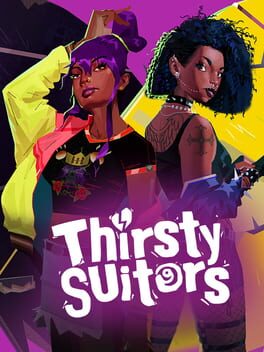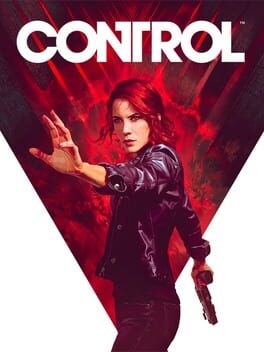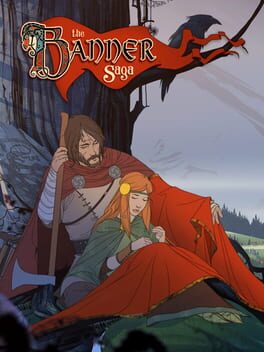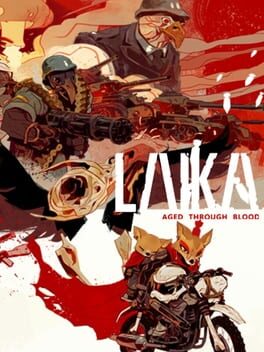PizzaPachulia
5 reviews liked by PizzaPachulia
Thirsty Suitors
2023
I walked into this expecting to really find it annoying, but it was more annoying in a gay way than a diaspora kid way so I felt able to be more lenient towards it. Still, I still find it lacking in having the conversations it needs to have. It’s moulded in the American liberal tradition of diaspora narratives, always ultimately optimistic about the ties that bind us and the motherlands, always finding the right angles where all our identities can be overlaid on top of each other perfectly. Even when this game is critical of the conservatism embedded in much of south asian social relations, it is reductively simplistic - the homophobic parents of one of the side characters are Brahmins who have brought all of their casteism to the new world that they have different plates for non-Brahmin guests! Jala’s, the protagonist’s, parents have historically progressed a generation ahead having eloped in a caste-exogamous marriage which informs how they raised their children. Their homophobia was dealt with in their generation too, with Jala’s aunt’s lesbianism leaving decades of room to have it addressed and sorted out. But this is a cowardly artifice rooted in contemporary anxieties of representation - our families are not violently homophobic satans clinging on to feudal hierarchies or futuristically progressive angels. Our anxieties are a lot more complex. My communist mother and liberal father (don’t say this is a good sitcom setup, I know, I’ve lived it for 22 years, Kerala has a great tradition of comedy of this vein) have always allowed me to do and be whatever and whoever I want, but they are still a pair of 52 year old Indian Gen X-ers. I don’t talk to them about queer issues. I don’t know where to start. I don’t know if their allowance of “what and who I want” extents to being a woman. I wish the game was interested in navigating this complexity instead of black and white depictions of south asian conservatism and progressivism. It reads very much like a “we don’t want to scare off a white liberal audience with a more nuanced engagement with the baggage of history”, and every time the game dips into “haha Asian parents am I right” humour I wanted to destroy the state of california.
On the flipside, and maybe this is what they were going for, Jala is a perfect fantasy. She is absolutely what people like me wish to be. Aside from the whole being a life-ruining mess for everyone part. She’s empowered, confident, supported by everyone, effortlessly cool. It is absolutely good that we have a game with a protagonist like her, as much as I can be critical of what that game is.
There’s a part of this game where Jala is criticised for choosing “the pleasures of the imperial core” over family and tradition. While the character suggesting this serves an antagonistic function, they are still suggested to be making a correct assessment. But Jala is a Tamil Brahmin whose family lives in Bangalore. The imperial core is where she is minoritised and racialised. The “pleasure of the imperial core” she has access to is queer struggle, not burgers and milkshakes. It’s a much easier struggle than what she’d face in the motherland, but it’s not easy, especially with this game’s weird anachronistic 90s setting. It just appeared so strange to me that such an idea would pop up in this game at all, and so evidently shows the game’s frustrating crisis in managing an original, personal story and the monomyth of asian diasporic narratives.
On the flipside, and maybe this is what they were going for, Jala is a perfect fantasy. She is absolutely what people like me wish to be. Aside from the whole being a life-ruining mess for everyone part. She’s empowered, confident, supported by everyone, effortlessly cool. It is absolutely good that we have a game with a protagonist like her, as much as I can be critical of what that game is.
There’s a part of this game where Jala is criticised for choosing “the pleasures of the imperial core” over family and tradition. While the character suggesting this serves an antagonistic function, they are still suggested to be making a correct assessment. But Jala is a Tamil Brahmin whose family lives in Bangalore. The imperial core is where she is minoritised and racialised. The “pleasure of the imperial core” she has access to is queer struggle, not burgers and milkshakes. It’s a much easier struggle than what she’d face in the motherland, but it’s not easy, especially with this game’s weird anachronistic 90s setting. It just appeared so strange to me that such an idea would pop up in this game at all, and so evidently shows the game’s frustrating crisis in managing an original, personal story and the monomyth of asian diasporic narratives.
Tales of Berseria
2016
Control
2019
The Banner Saga
2014
the banner saga is the fantasy epic of our times. visiting it again, my appreciation for everything it achieves grows deeper. games as economy require clever solutions for costly goals, and the format of traveling via a caravan allow the fantasy of a world fully immersed and realized for the player. indeed, the game evokes a long history buried in the deep snow of the north, one of a fragile peace subsiding once again to old war and devastation, and seemingly even further: total annihilation. we see only the edges of this in this game, and the ending haunts of what is to come.
on this playthrough i played the campaign on hard difficulty, and the emphasis on attrition of resources became even greater. the tactical combat layer to the game i think is misunderstood and i think even underrated, but it is understandable. in traditional turn-based tactics game, the meta is undoubtedly to focus a single target, whittling them down one-by-one. the banner saga's combination of health and attack power into one stat dramatically changes this. indeed, there is little point to killing an enemy who has one strength left, or more importantly: an enemy who has less strength than any of your roster. if you waste your resources on inefficient targets, you can easily find yourself at the end being picked off by those you left alone.
the game is richest when you're in this cycle of carefully utilizing your resources. renown can be used to buy supplies which keep the caravan strong and thriving, but also to buy trinkets or direct upgrades for your troops. there are many optional battles too that may reward renown and supplies, but fights can be costly and you can rack up injuries on your troops which dramatically undermine their combat ability. in many tactics games you often maintain a single roster, but on hard difficulty it askes you to be effective with many. most games struggle to have meaningful difficulty, i feel, but banner saga realizes its metaplay quite well and it feels fair all around.
i move now to continue the series with the banner saga 2.
on this playthrough i played the campaign on hard difficulty, and the emphasis on attrition of resources became even greater. the tactical combat layer to the game i think is misunderstood and i think even underrated, but it is understandable. in traditional turn-based tactics game, the meta is undoubtedly to focus a single target, whittling them down one-by-one. the banner saga's combination of health and attack power into one stat dramatically changes this. indeed, there is little point to killing an enemy who has one strength left, or more importantly: an enemy who has less strength than any of your roster. if you waste your resources on inefficient targets, you can easily find yourself at the end being picked off by those you left alone.
the game is richest when you're in this cycle of carefully utilizing your resources. renown can be used to buy supplies which keep the caravan strong and thriving, but also to buy trinkets or direct upgrades for your troops. there are many optional battles too that may reward renown and supplies, but fights can be costly and you can rack up injuries on your troops which dramatically undermine their combat ability. in many tactics games you often maintain a single roster, but on hard difficulty it askes you to be effective with many. most games struggle to have meaningful difficulty, i feel, but banner saga realizes its metaplay quite well and it feels fair all around.
i move now to continue the series with the banner saga 2.
At the moment of writing there’s very little discourse about Laika online, mostly contained within Steam. And with Steam reviews being Steam reviews, people are defining this game through easily identifiable correlative qualifiers. It’s set in a motorized wasteland, kinda like Mad Max! You ride a bike, so it’s Trials with a gun! The combat involves air pirouettes, literally My Friend Pedro! It’s a cartoony castleroidvania, so basically Hollow Knight! It’s easy to dismiss Laika as a hodgepodge pastiche of all things indie, especially in the season motley of overmarketed 90 metacritic releases. The best thing the developers could do in this environment was to release the demo version. It takes 15 minutes hands-on to realize you’re dealing with something special here.
When broken down to bare essentials, the ingredients are pretty familiar. It’s a 2D-sidescroller and you’re on a bike. You balance the bike with the left stick and aim the gun with the right stick. Checkpoints are plentiful but it's always a one-hit kill for you or the enemies. Except, the bike is a large hitbox that shields you from bullets, and you have very little ammo in the clip before you have to reload the gun by doing an air backflip. These two are the brilliant integrals which allow Laika gain its own, completely unique moment-to-moment language. A bump on the road that sends you flying isn’t just an obstacle – it’s an opportunity: either a defensive one to shield yourself from fire or a chance to regain ammo with an iffy flip. It leads to encounters of positional enemy prioritization, risky acrobatics, resource management and split-second decisions. It allows for boss fights that serve as ultimate tests of these particular player skills in more patterned, elaborate bouts. It’s an unusual arrangement of mechanics you definitely need to try for yourself to see if it works for you. If it does though you’ll find such a sick, satisfying system that presses many familiar buttons but plays a totally different tune.
Another structural aspect that impressed me highly is the fundamental purity of Laika’s search action pace. I tend to go on the demo hunts every Steam Next Fest season, and it appears that the current trend in metroidvania design is maximalism – more skill trees, more abilities, more gameplay modifiers, more quote on quote things to mess with. There’s nothing wrong with this approach (in fact just recently I really enjoyed Astlibra, and I’m quite excited for Tevi too), but it makes me appreciate a game like Laika, where every upgrade feels like a radical option expanding power spike. In fact there are exactly two items that give you new traversal abilities – and they are such an exciting change of paradigm that make you rethink the way you approach every gameplay moment. It’s that game from the universe where System Shock 1 was the touchstone game design classic while more numbers driven System Shock 2 was relegated to a curious footnote in history.
The voice of Laika too is diametrically different from what you expect in the medium. Through the advent of prestige sad dad games we've been completely missing stories focused on motherhood and associated female growth – and Laika is that exact tale. The explosive growth of Soulslikes prescribed exposition, The Lore, as the main worldbuilding tool – Laika defines its world without a single written description of an event. The game goes against the established flow if it can benefit from it, but where it matters – Laika preaches to the choir. As in, the anti-imperialist narrative about war, the atrocities it brings and how it warps the combatants, is, to say the least, appreciated in our current world. So are the serene moments of tranquility in-between skirmishes, accentuated by a wonderful vocal soundtrack.
As you can see, I’m very passionately dazzled by Laika. It’s one of the best game I played and artistically it came at exactly the right time. Give it a chance, don’t let it slip through the constant whirlpool of game releases. It deserves to be recognized as a classic.
When broken down to bare essentials, the ingredients are pretty familiar. It’s a 2D-sidescroller and you’re on a bike. You balance the bike with the left stick and aim the gun with the right stick. Checkpoints are plentiful but it's always a one-hit kill for you or the enemies. Except, the bike is a large hitbox that shields you from bullets, and you have very little ammo in the clip before you have to reload the gun by doing an air backflip. These two are the brilliant integrals which allow Laika gain its own, completely unique moment-to-moment language. A bump on the road that sends you flying isn’t just an obstacle – it’s an opportunity: either a defensive one to shield yourself from fire or a chance to regain ammo with an iffy flip. It leads to encounters of positional enemy prioritization, risky acrobatics, resource management and split-second decisions. It allows for boss fights that serve as ultimate tests of these particular player skills in more patterned, elaborate bouts. It’s an unusual arrangement of mechanics you definitely need to try for yourself to see if it works for you. If it does though you’ll find such a sick, satisfying system that presses many familiar buttons but plays a totally different tune.
Another structural aspect that impressed me highly is the fundamental purity of Laika’s search action pace. I tend to go on the demo hunts every Steam Next Fest season, and it appears that the current trend in metroidvania design is maximalism – more skill trees, more abilities, more gameplay modifiers, more quote on quote things to mess with. There’s nothing wrong with this approach (in fact just recently I really enjoyed Astlibra, and I’m quite excited for Tevi too), but it makes me appreciate a game like Laika, where every upgrade feels like a radical option expanding power spike. In fact there are exactly two items that give you new traversal abilities – and they are such an exciting change of paradigm that make you rethink the way you approach every gameplay moment. It’s that game from the universe where System Shock 1 was the touchstone game design classic while more numbers driven System Shock 2 was relegated to a curious footnote in history.
The voice of Laika too is diametrically different from what you expect in the medium. Through the advent of prestige sad dad games we've been completely missing stories focused on motherhood and associated female growth – and Laika is that exact tale. The explosive growth of Soulslikes prescribed exposition, The Lore, as the main worldbuilding tool – Laika defines its world without a single written description of an event. The game goes against the established flow if it can benefit from it, but where it matters – Laika preaches to the choir. As in, the anti-imperialist narrative about war, the atrocities it brings and how it warps the combatants, is, to say the least, appreciated in our current world. So are the serene moments of tranquility in-between skirmishes, accentuated by a wonderful vocal soundtrack.
As you can see, I’m very passionately dazzled by Laika. It’s one of the best game I played and artistically it came at exactly the right time. Give it a chance, don’t let it slip through the constant whirlpool of game releases. It deserves to be recognized as a classic.




